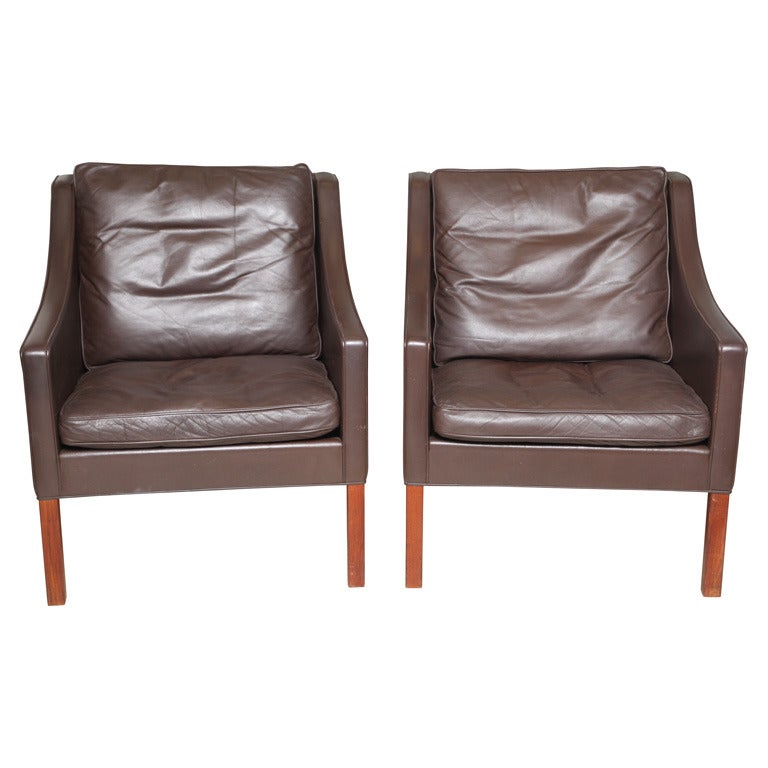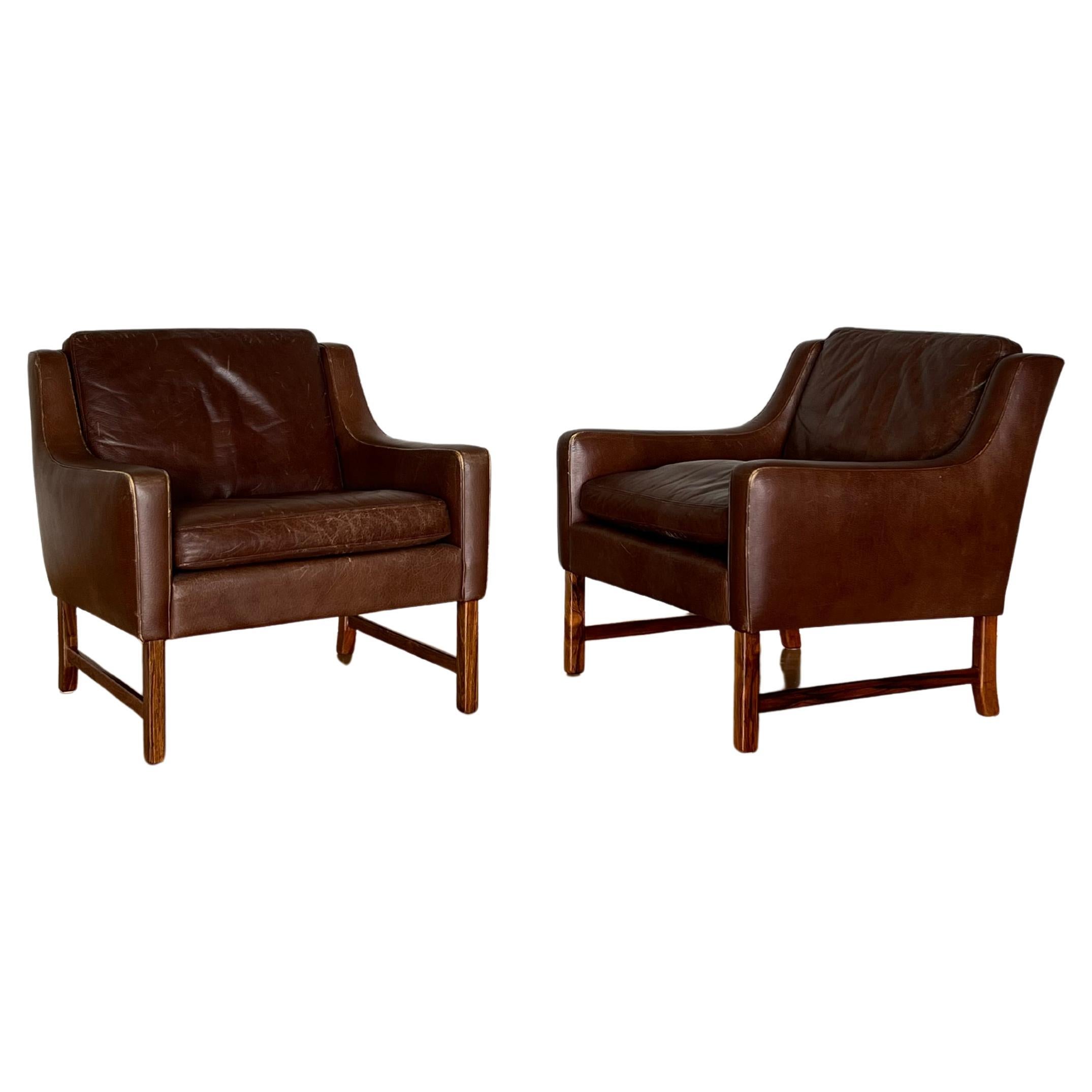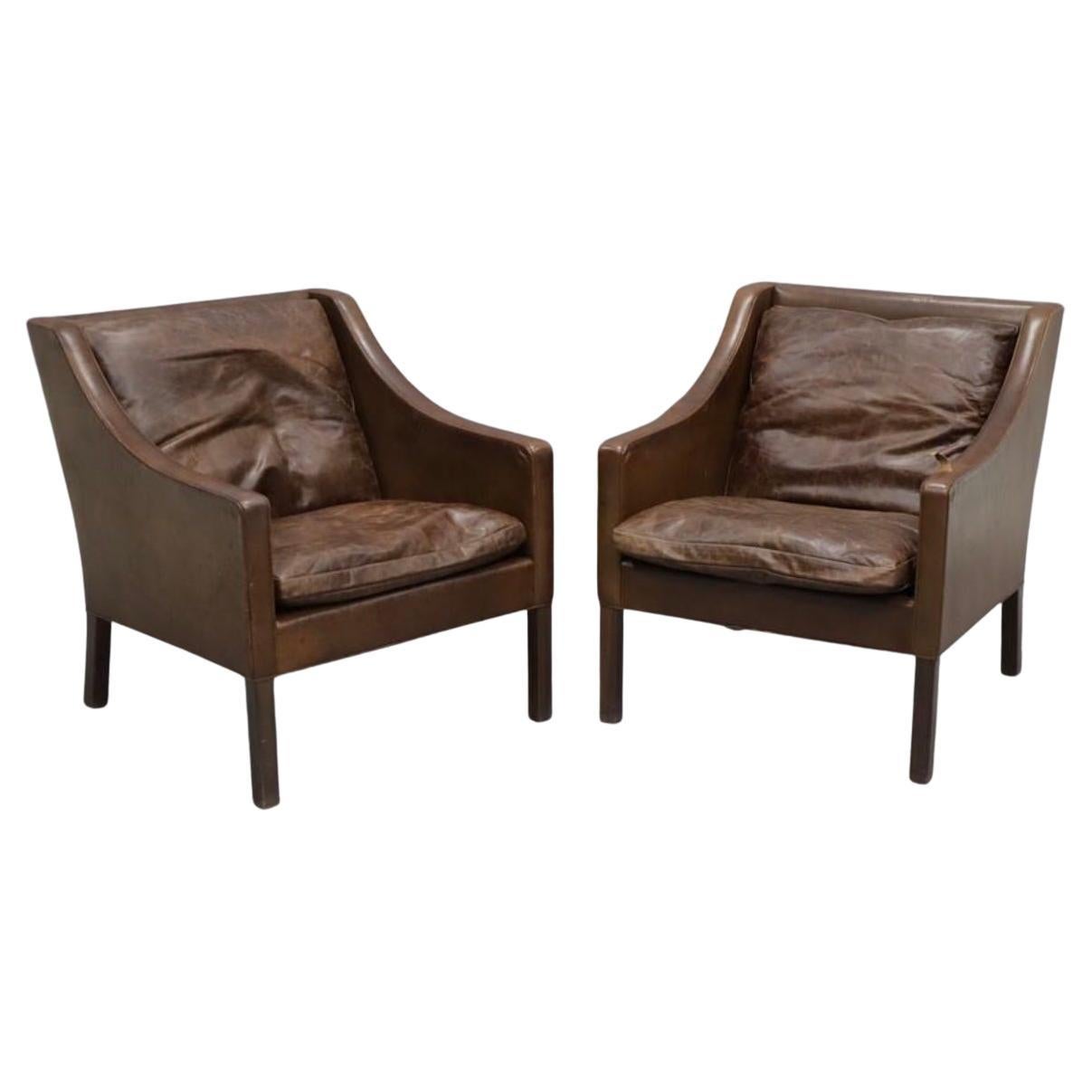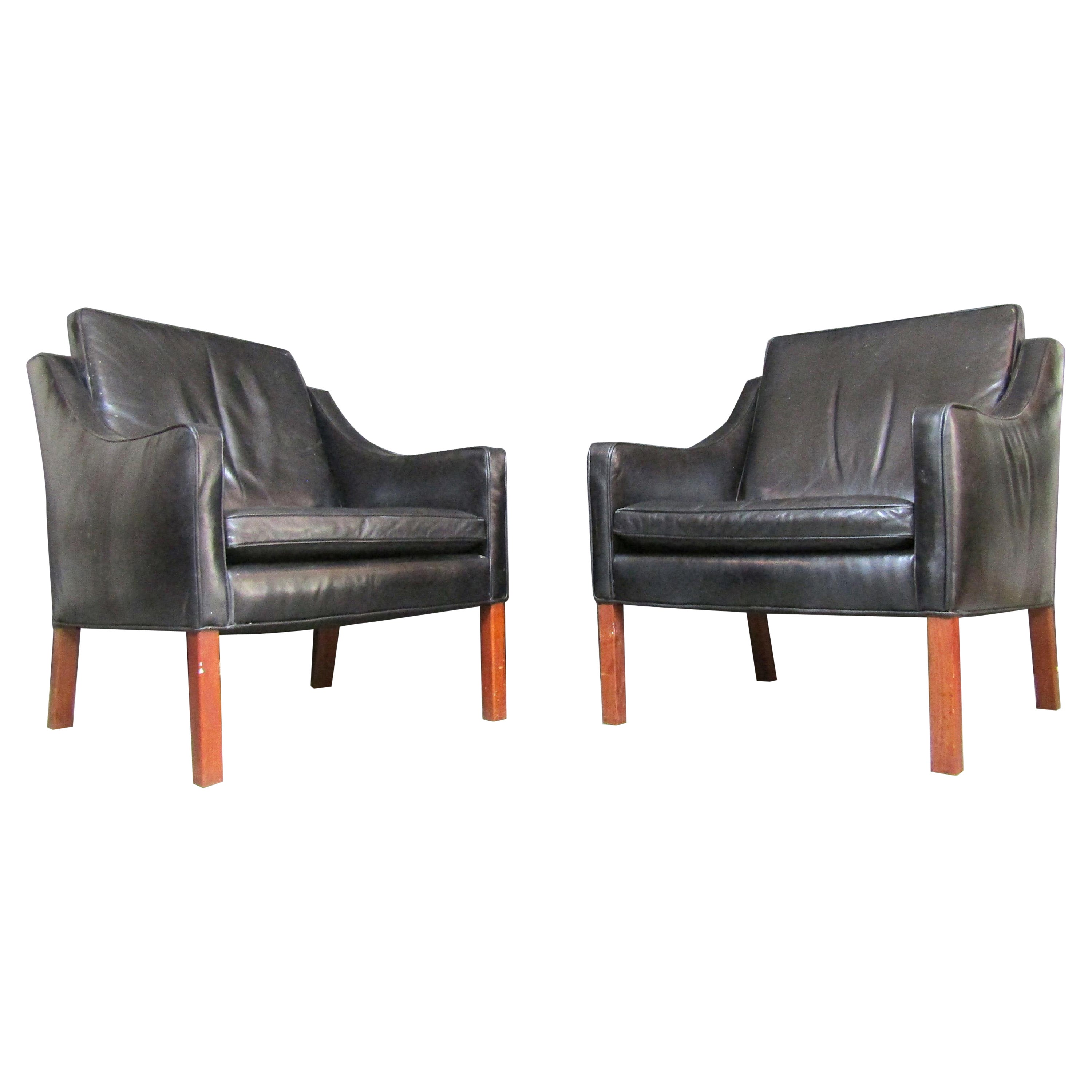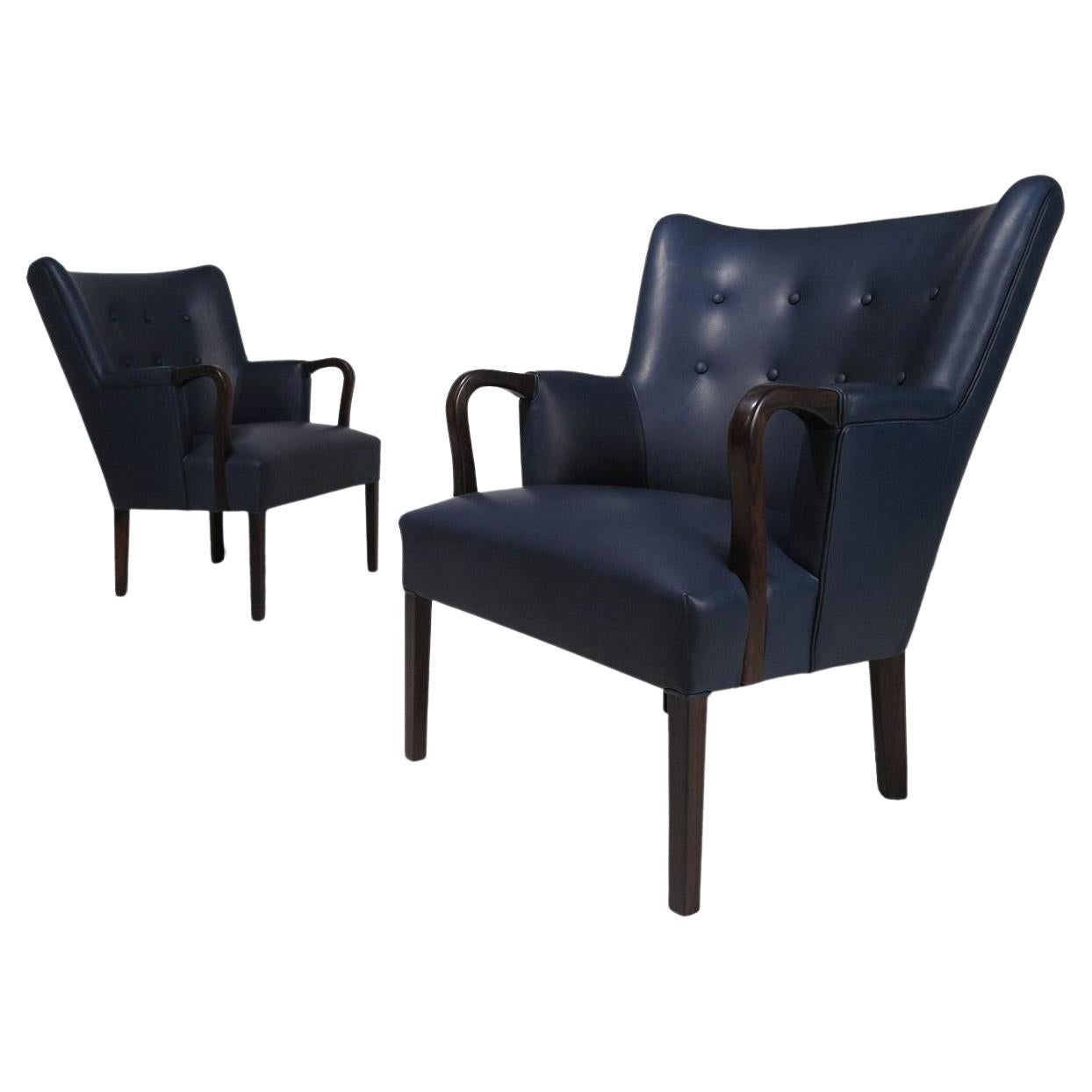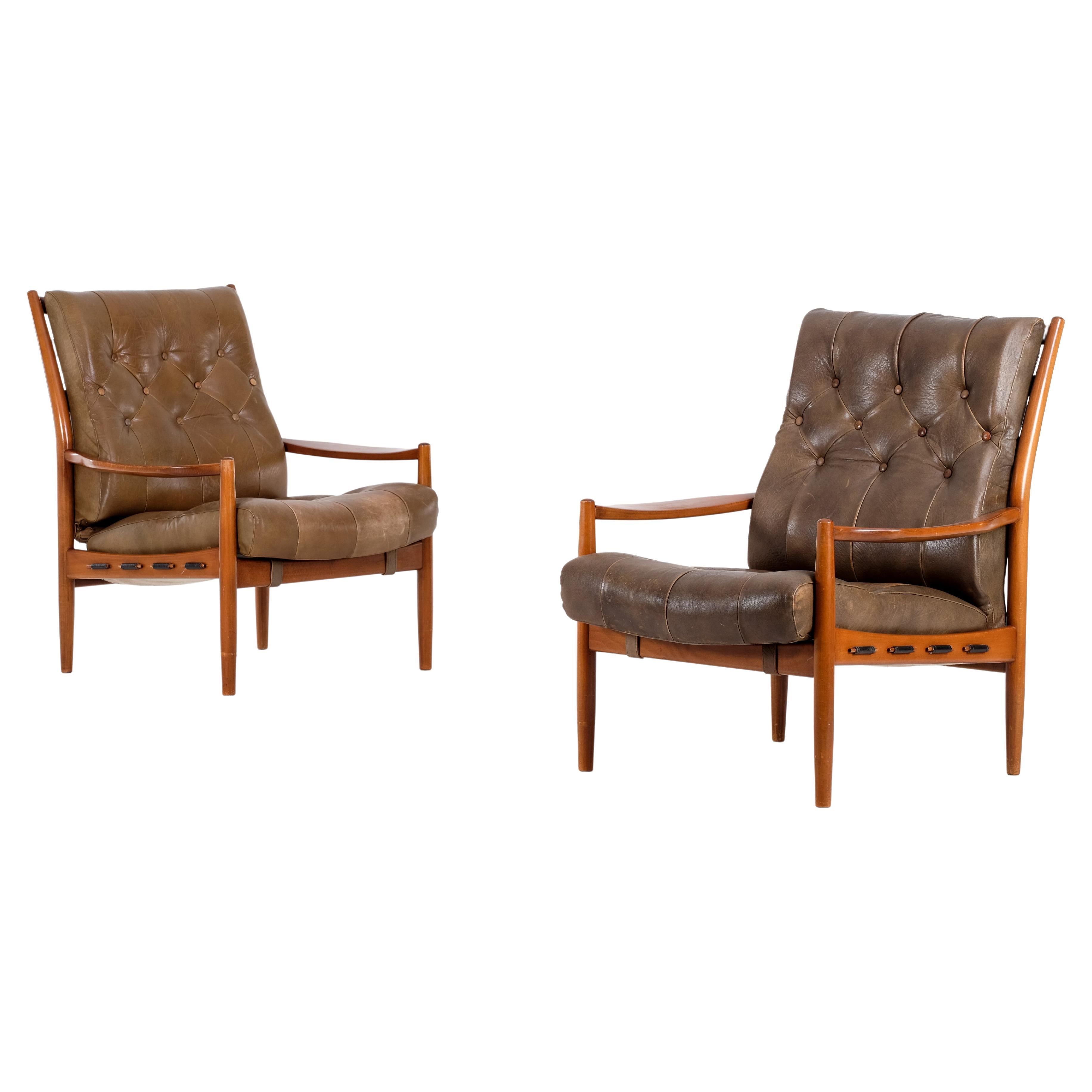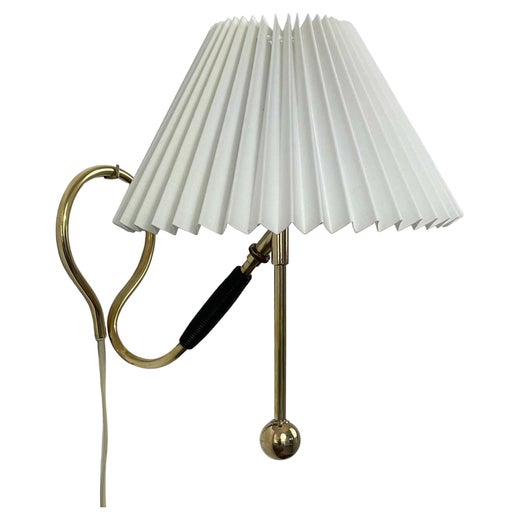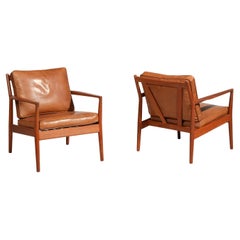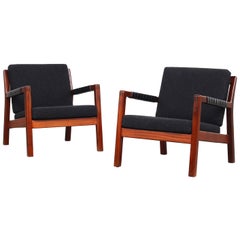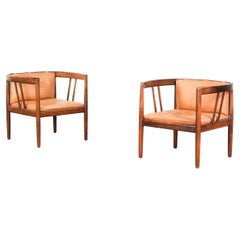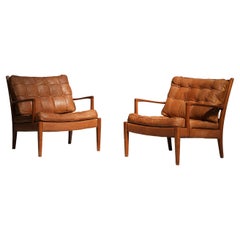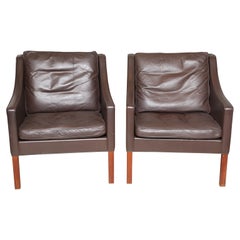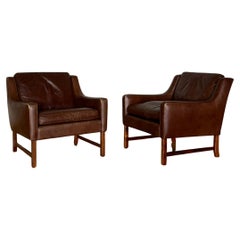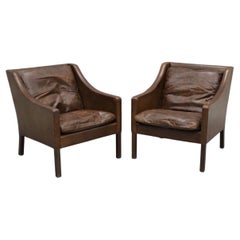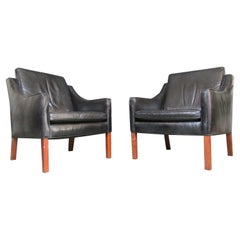Pair of Tufted Danish Lounge Chairs Attributed to Kaare Klint Borge Mogensen
About the Item
- Creator:Børge Mogensen (Manufacturer),Kaare Klint (Designer)
- Dimensions:Height: 29.53 in (75 cm)Width: 28.35 in (72 cm)Depth: 26.38 in (67 cm)
- Sold As:Set of 2
- Materials and Techniques:
- Place of Origin:
- Period:
- Date of Manufacture:1960
- Condition:
- Seller Location:Berlin, DE
- Reference Number:1stDibs: LU1865312846052
Kaare Klint
Architect, teacher and furniture designer Kaare Klint is among the most important figures in Scandinavian modernism. Widely recognized as the father of modern Danish furniture, Klint sought to pay homage to historical furniture styles and prized functionality as essential to designing for modern living. He established the design school at Copenhagen’s Royal Danish Academy of Fine Arts, and his students became mid-century legends of cabinetry and furniture-making.
Klint prioritized functionalism and drew on an array of influences in his own work. Furniture experts will observe the influence of 18th-century English seating in his Red chair, while Klint’s iconic Safari chair had roots in campaign furniture. The other exemplary chairs, sofas and tables for which he is known bear the mark of Thomas Chippendale and Biedermeier furniture as well as Greek and Roman forms.
Klint's father was Peder Vilhelm Jensen-Klint, a formidable architect of his day. The younger Klint initially followed in his father’s footsteps, studying under him as well as distinguished architect Carl Petersen. Alongside Danish architect Ivar Bentsen, he headed the renovation of the Designmuseum Denmark in Copenhagen from 1920–26 (Klint also furnished the institution as part of the project). Around the same time, Klint helped found the furniture design school at the Royal Danish Academy. The impact of his role as an instructor there cannot be overstated — he mentored such esteemed cabinetmakers and furniture designers as Børge Mogensen, Hans Wegner and Ole Wanscher.
A prominent advocate of ergonomics, Klint valued comfort and functionality over style. Painstaking research went into each piece of sophisticated yet wholly unadorned furniture he designed, as he endeavored to build structures that took into consideration human proportions and scale. And like the Shakers, Klint believed that quality craftsmanship and good materials were integral to the design of durable furniture that was free of embellishment.
The humble grace of Klint’s style characterizes legendary seating designs that continue to charm today’s legions of mid-century modern enthusiasts. His Safari chair, Faaborg chair, Ravenna armchair and Propeller stool — as well as most of the seating created by Danish modernists generally — have warmed interiors and influenced furniture designers all over the world.
Find vintage Kaare Klint furniture and other Scandinavian modern furniture on 1stDibs.
Børge Mogensen
Among the great mid-20th century Danish furniture designers, Børge Mogensen distinguished himself with his faith to traditional values of craftsmanship and honesty of materials.
While peers such as Hans Wegner, Finn Juhl and Arne Jacobsen designed some of the most striking and now iconic furnishings of the era, Mogensen focused on making chairs, sofas and other pieces that were simple, durable and comfortable — and in the long run perhaps more useful and better loved.
Mogensen studied under and later worked for Kaare Klint, a master cabinetmaker whose chief tenets were quality of construction and simplicity of line. Klint was a classicist, who believed that furniture forms should evolve from those of historical models. So, too, in his way was Mogensen, as two of his best-known earlier pieces attest.
His 1945 Spokeback sofa, with hinged arms that can be lowered to facilitate lounging, is a reinterpretation of the venerable Knole settee. With the oval silhouette of its plywood backrest and waterdrop-shaped cutouts, Mogensen’s Shell chair, designed in 1949, can be seen as a novel take on early 19th-century Empire side chairs.
Yet Mogensen shared the aesthetical sensibilities of his most forward-looking colleagues. His cabinets deploy the same spare geometries and lushly figured woods as those of Ludwig Mies van der Rohe and his disciple Florence Knoll, the chief difference being that Mies and Knoll used chrome steel for the frames and legs of their pieces. The brawny oak frames and slung leather seats and backrests of Mogensen’s Hunting chair (1950) and Spanish chair (1958) display the same hefty construction and appreciation of natural materials seen in the work of Charlotte Perriand and Sergio Rodrigues.
Mogensen designed for function more than sculptural effect. While his chairs may not be the first pieces in a décor to draw the eye, they are often the first to draw in those looking for a comfortable seat.
Find vintage Børge Mogensen dining tables, bookcases and other Scandinavian modern furniture for sale on 1stDibs.
- ShippingRetrieving quote...Shipping from: Berlin, Germany
- Return Policy
More From This Seller
View All20th Century Danish Lounge Chairs
Leather, Teak
20th Century Finnish Lounge Chairs
Leather, Ash
20th Century Danish Lounge Chairs
Leather, Wood
Vintage 1960s Lounge Chairs
Leather, Wood
20th Century Lounge Chairs
Teak
20th Century Lounge Chairs
Leather, Teak
You May Also Like
Vintage 1960s Danish Club Chairs
Leather, Teak
Vintage 1960s Norwegian Scandinavian Modern Lounge Chairs
Leather, Palisander
Mid-20th Century Club Chairs
Leather
Mid-20th Century Mid-Century Modern Armchairs
Leather
Mid-20th Century Danish Scandinavian Modern Lounge Chairs
Leather, Rosewood
Vintage 1960s Swedish Scandinavian Modern Armchairs
Leather, Beech
